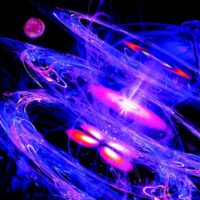QUANTUM MANIFESTO
On May 17 2016, the European Commission announced the launch of the new FET Flagship on Quantum Technologies (as part of the Horizon 2020 Research Framework Programme), a 10-year research programme that will involve all Member States with a total investment of one billion euros from 2018. The call for the European Commission and Member States to support a Flagship for Quantum Technologies was made through the Quantum Manifesto, shared by more than 3,600 researchers, entrepreneurs and representatives of institutions with the aim of positioning Europe at the forefront of emerging technological challenges worldwide.
Italy can take on a role of absolute importance within the Flagship thanks to the scientific excellence present in the national territory. The Italian contribution to the preparation of The Flagship was guaranteed thanks to a major investment by CNR and MIUR amounting to 1.5 million euros to ERANet QuantERA, the consortium participated by more than 25 national agencies.
The Italian participation in flagship is coordinated by the CNR, commissioned by the former Minister of Education, University and Research, Stefania Giannini with the aim of contributing to the enhancement of Italian scientific excellence in the field and effectively supporting the fallout on industrial sectors of fundamental importance for the competitive development of the country.
APPLICATION AREAS

QUANTUM COMMUNICATIONS
will help protect the increasing amounts of citizens’ data transmitted digitally, for instance health records and financial transactions. A typical implementation of quantum networks uses single photons. If anything intercepts a single photon it will be noticed, meaning that with quantum technology we can achieve the most secure form of communication known, impossible to intercept without detection. For point-to-point communication, this is already on the market today and will be developed further into a quantum internet.

QUANTUM SIMULATIONS
Closely related to quantum computers are quantum simulators. They will be key to the design of new chemicals, from drugs to fertilisers for future medicine and agriculture, and of new materials, such as hightemperature superconductors for energy distribution without losses. Some quantum simulators are specialised quantum computers. Others imitate the idea of a wind tunnel: while there, small models are used to understand the aerodynamics cars or planes, some quantum simulators use simple model quantum systems (such as an array of single atoms) to understand systems that would be even more difficult to experiment with.

QUANTUM SENSING & METROLOGY
In addition to Quantum Communication, Quantum sensors will arguably be the basis for the first applications of Quantum Technologies. They provide the most accurate measurements and will drastically increase the performance of consumer devices and services, from medical diagnostics and imaging to high-precision navigation, to future applications in the Internet of Things. Quantum sensors use similar technologies as quantum computers and networks: they detect the tiniest disturbances because they are based on e.g., single electrons, the smallest possible charges and magnets. Quantum metrology uses quantum sensors to define the standards for e.g. time-keeping or electrical measurements.

QUANTUM COMPUTING
Quantum computers will make enormous computing power available to solve certain problem classes. They are built from “quantum bits” (individual atoms, ions, photons or quantum electronic circuits) and exploit superposition and entanglement, to solve problems we could never solve otherwise. That includes, for example, processing vast amounts of data faster than ever before to search databases, solve equations, and recognise patterns. They may even have the potential to train artificial intelligence systems, e.g. for digital assistants that help doctors to diagnose diseases and suggest the most promising therapy, or to optimise the routes of all cars in a city simultaneously to avoid traffic jams and reduce emissions.

QUANTUM BASIC SCIENCE
The area of Basic Science will cover the research and development of basic theories and components, addressing a foundational challenge of relevance for the development of quantum technologies in at least one of the four areas that have been mentioned previously (Quantum Communications, Quantum Simulations, Quantum Sensing and Metrology as well as Quantum Computing) to improve the performance of the components or subsystems targeted in those areas.
The Second Quantum Revolution
The Quantum Technologies Flagship aims to place Europe at the forefront of the second quantum revolution, bringing revolutionary progress to science, industry and society.
The so-called first quantum revolution, which allowed scientists to understand and use quantum effects, began in the early 20th century and brought many devices to the market, such as transistors and microprocessors, medical imaging scanners and lasers.
The second quantum revolution began at the beginning of the 21st century. Scientists can now manipulate and perceive individual particles, measuring and exploiting their properties. This has led to significant development of quantum technologies and technological advances in computing, sensors, simulations, cryptography and telecommunications.
Europe has a long tradition of excellence in quantum research and to maintain its position of global prominence, it is necessary to develop a solid industrial base.
Ambitious initiatives in quantum technologies are already underway in several EU countries, with the aim of developing commercial applications and bringing them to market. Coordinated efforts between research and industry are therefore needed.
Since 1998, the European Commission’s Future and Emerging Technologies (FET) programme has provided around EUR 550 million in funding for quantum research in Europe. As a shared programme at European level, supported by all Member States, the Quantum Technology Flagship, based on previous European funding efforts, will enable Europe to adapt to the research and development of its global competitors.

